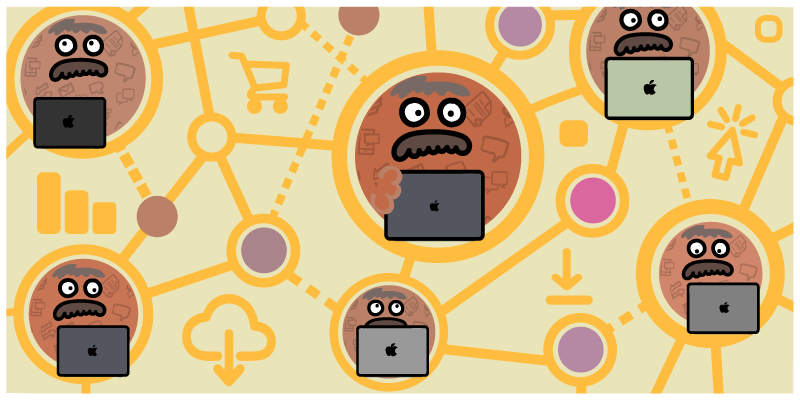Associating companies with each other to form company hierarchies in HubSpot CRM is a critical component of account-based marketing (ABM).
Effective ABM requires communication with all organizational stakeholders. Often, this means engaging with stakeholders in acquired or subsidiary companies, especially for larger or more impactful deals. But without accurate child-parent company associations in HubSpot, it is impossible to identify and connect with all stakeholders that might have a say in an upcoming potential deal.
Unfortunately, creating and maintaining child-parent relationships is an arduous process. You must analyze your existing data, determine how to differentiate child and parent companies, and then associate them in HubSpot. This is often a mostly manual endeavor.
Naturally, companies look for ways to automate this process. But they quickly find that automating child-parent associations is more complex than they think. Associations cannot be created, removed, or edited automatically in Workflows, HubSpot’s primary automation tool. So companies must handle this process by hand, develop a custom solution, or simply forego reliable child-parent associations and deal with the fallout of not having them.
Why Child-Parent Company Associations Are Critical For ABM
Although many companies find it challenging to sustain child-parent associations in their CRM, these associations are essential to successful ABM. Sales representatives require a complete picture of every account they engage with, so they must be able to view related businesses and stakeholders swiftly and easily.
Without a complete picture of all stakeholders tied to a given company hierarchy, some will slip through the cracks. Those people will never receive your marketing messages or hear from your sales teams. Their concerns will never be logged or incorporated into your discussions. Your sales reps will fail to answer objections they didn’t even know existed.
And that’s not all. Without proper associations in place in your HubSpot CRM, it can be hard for your teams to know who they’re talking to.
Often, child companies may have similar names to parent companies. For example, the child may be “Acme Co.” while the parent company is “Acme Holdings.” This can create situations where deals are assigned to the wrong company accidentally. Then, when the rep realizes the deal is missing, they enter a new deal in HubSpot, creating a duplicate. As a result, context regarding your team’s interactions from that deal may be split up between multiple records, causing missed opportunities and a poor customer experience. And if one of the deal is associated with a company that is errantly outside of the hierarchy, your teams will proceed missing a majority of the available context available for that account.
Those issues aren’t limited to your sales reps, either. Support and success reps who rely on the full context of previous interactions will struggle to find it, resulting in aggravating interactions for customers.
Companies need accurate child-parent associations to run a successful ABM program. But manually maintaining these associations is extremely time-consuming and will pull your teams away from other critical projects.
Associating Child Companies to Parent Companies is Not Possible in HubSpot Workflows
When companies decide to look for ways to automate child-parent associations in HubSpot, the first place they look is HubSpot Workflows. Workflows are the primary method for automating processes in Hubspot CRM.
But while HubSpot does offer automatic associations based on a company domain, it is only available for contact-to-company associations, and not company-to-company associations. You cannot create, edit, or remove child-parent company associations inside of a HubSpot Workflow, either.
In fact, the only truly automatic way to create company-to-company associations in HubSpot is to custom-code a solution—either in Operations Hub or externally using the HubSpot API.
But developing a custom-code solution isn’t so simple. You need a way to discern a child company from a parent company within the data. Most companies can’t do so through their existing data, so they have to inject attributes that allow them to do that, such as including “HQ” in a parent company’s name, like “Microsoft HQ.”
Even after you’ve identified and rolled out your solution, there will always be exceptions that you need to account for. Your data changes over time, and you’ll have to continually update your solution as you identify gaps. That means months of dedicated development help to build and maintain your solution.
This leads to frustration. Often, companies end up requiring their sales team to create and maintain these associations manually, but this is not a viable solution. Let’s look at why that is.
Making Manual Child-Parent Company Associations in HubSpot Is Not a Viable Solution
After realizing automation is not an option, management will often task a team with manually associating child-parent companies. And because it is easy to underestimate the amount of work required, the team is likely to push back quickly, so the plan dissolves.
The fact is that the process of manually associating companies in HubSpot takes a very long time, so it is definitely not a viable option for organizations that need to create many new associations.
First, you have to analyze your companies in each potential hierarchy to determine which records are parent companies and which are child companies. But it’s not always transparent. They may have similar names. The list may include duplicates. You’ll have to dig in deeper to discern what is what.
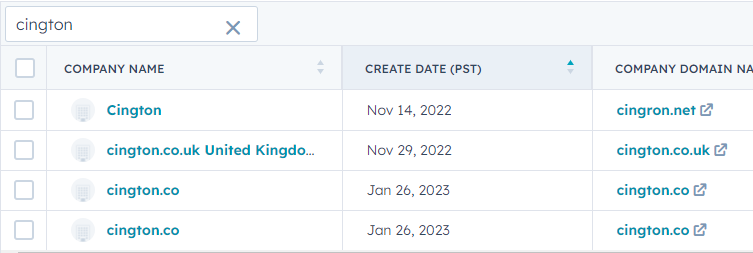
Analyzing company records in HubSpot
Once you’ve chosen a company to associate with, you can navigate to the company record to make the association, on the right-hand side of the record page in the Related Companies section. Click the button.
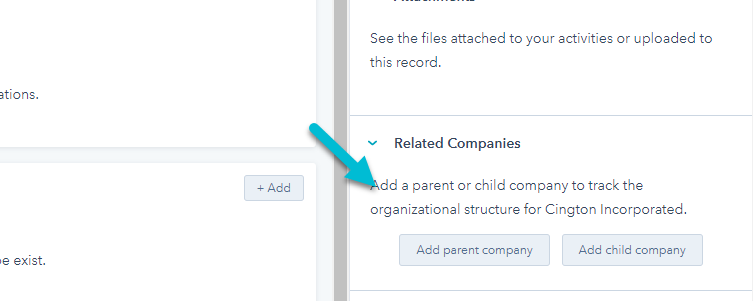
Add child companies or parent companies in HubSpot
This will open a popup window where you can choose the company you want to associate with the record.
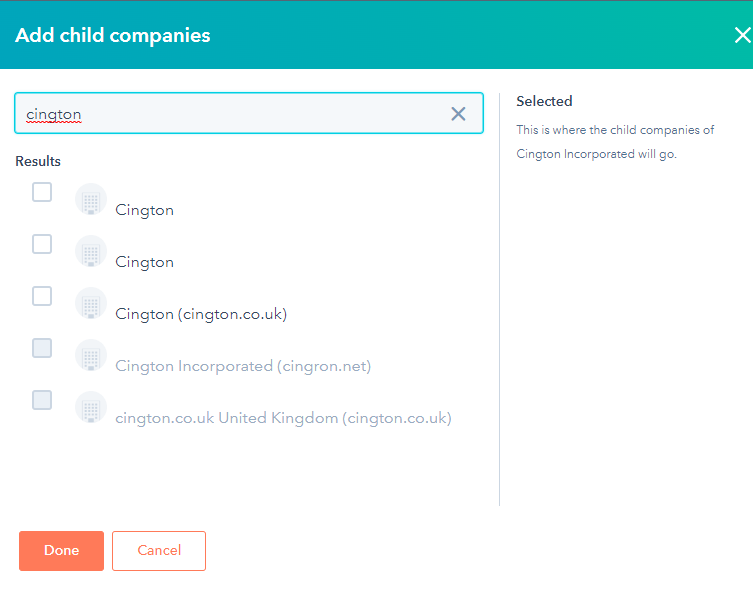
Potential child company records to associate
But choosing the right company on this page is not always easy. You must know the name of the child company, and all the companies on the list may have similar names. And you can’t dig deeper into the data within each record on this screen to figure out which is the right company. You’ll have to open up a new tab to do that. Only once you have figured it all out can you add the association.
And that’s the child-parent association process for just one record. Advanced company hierarchies can have dozens of different companies. You must repeat the same process for every child company in that hierarchy and for every hierarchy in your database.
It’s easy to see how manually maintaining child-parent associations isn’t viable in the long term.
But there is a better way. Insycle allows you to automatically create, overwrite, and remove child-parent associations in multiple ways, including on a set schedule or through HubSpot Workflows.
Insycle Allows You To Create Child-Parent Associations in HubSpot Workflows
For companies that require reliable child-parent associations in HubSpot and need them to be linked automatically, Insycle is here to help.
First, Insycle allows you to create, remove, or overwrite associations in bulk, using any field in your HubSpot CRM to match child companies to parent companies.
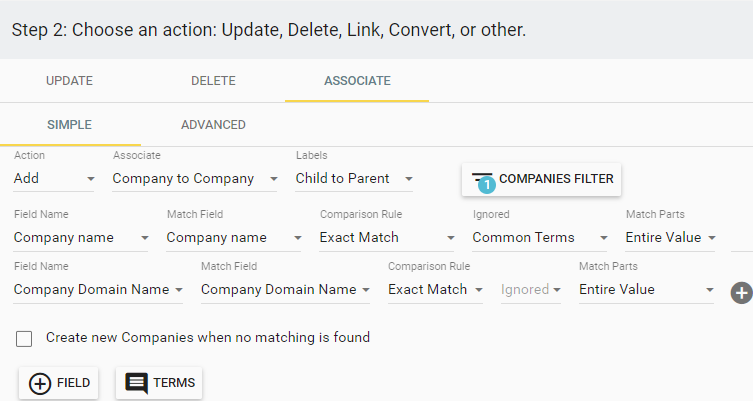
Associating child companies to parent companies in Insycle
You control advanced rules for how Insycle matches those companies. This allows you to make company associations in HubSpot even when the underlying data is inconsistent.
- Comparison Rule: Choose between exact match and similar match.
- Ignored: Choose the parts of the field to ignore, such as common terms (Inc., LTD., or Co.), symbols, digits, or whitespaces.
- Match Parts: Match the entire value in the field or only portions of the value, such as the first two words or first 10 characters.
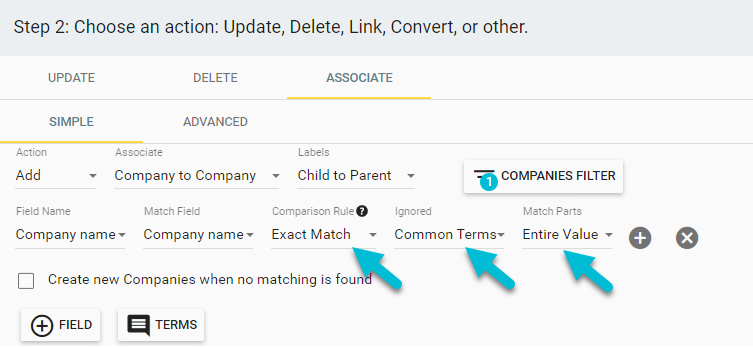 Advanced matching functionality for creating, removing, or setting child-parent associations
Advanced matching functionality for creating, removing, or setting child-parent associations
Then, you can schedule association templates to run on a set schedule, such as daily, weekly, or monthly.
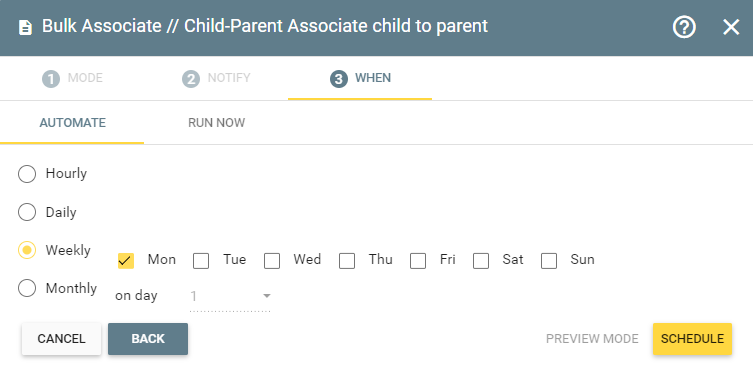
Automating child-parent associations to run on a set schedule
Often, you’ll have multiple association templates that you use to cover different types of situations. For example, you might have templates that create child-parent associations using multiple different fields, depending on your use case.
You might have one that makes child-parent associations based on company names.
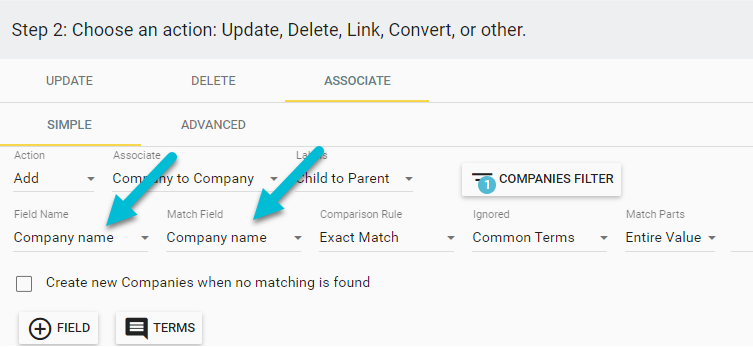
Matching child companies to parent companies by company name
Then you might have a template that makes those associations based on company domain names.
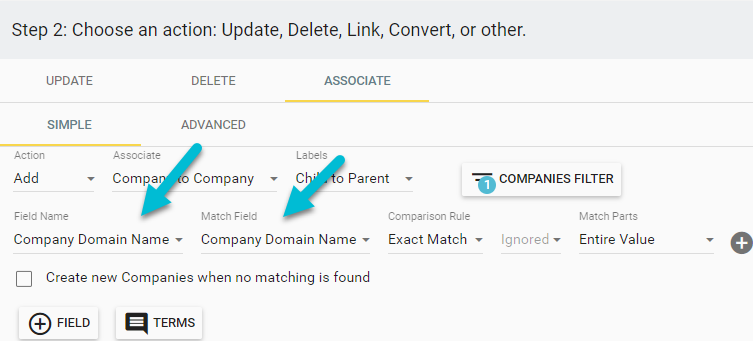
Matching child companies to parent companies by company domain name
When you have multiple templates, you can bundle them into a Recipe and run them together. In that Recipe, you define the order in which the templates will run.
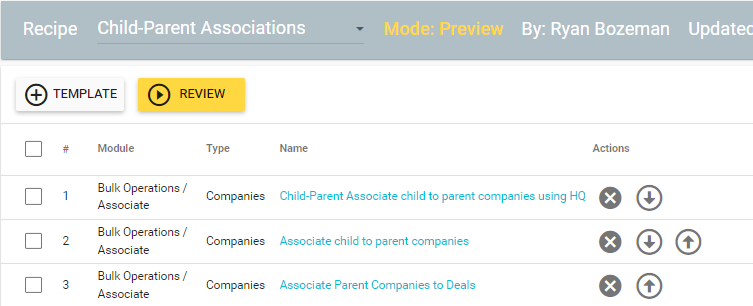
A child-parent association recipe in Insycle
You can also schedule the entire bundled Recipe to run on a set schedule, just as you would a single template.
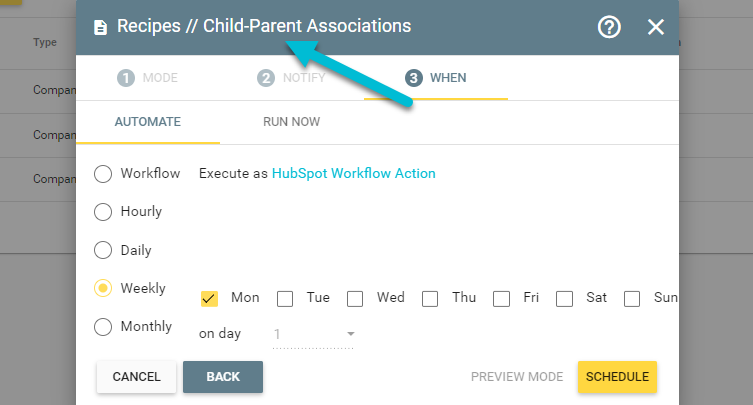
Automating a child-parent association Recipe in Insycle
If you need associations to be made even more quickly, such as immediately after a new company record enters your database, you can inject your child-parent association Recipe directly into HubSpot Workflows.
That way, child and parent companies will be automatically associated with one another directly after they hit your CRM and before your first communications with the company go out.
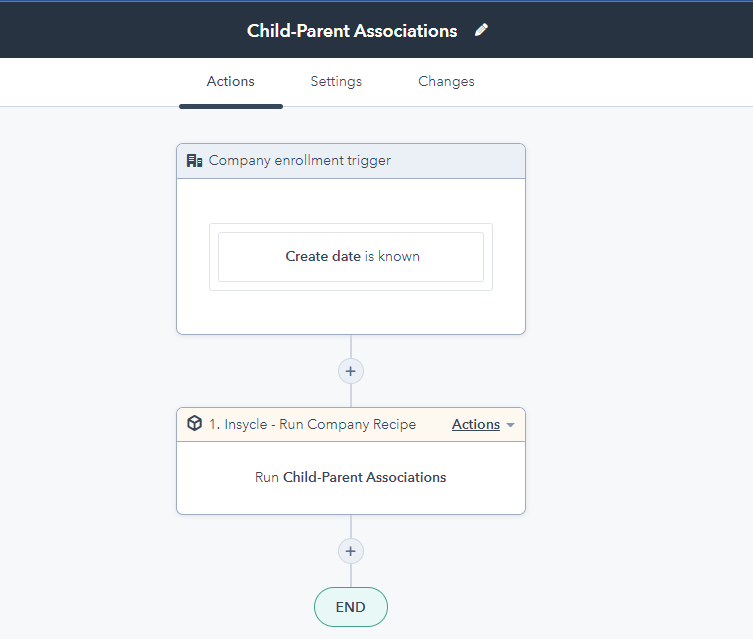
Associating newly added child companies to parent companies in HubSpot Workflows
With Insycle’s integration with HubSpot Workflows, you’ll be able to ensure that related companies are being appropriately associated with one another immediately after a company record is created in HubSpot CRM. This ensures that your sales, support, and success reps are all working with full context when engaging with customers and are able to provide fulfilling experiences.
Automate Child-Parent Associations in HubSpot Workflows
Insycle provides HubSpot businesses with the resources they need to properly manage child-parent associations and helps them overcome common obstacles. With Insycle, you can use any field in your database as a matching field to establish child-parent associations in bulk. You can do this automatically on a set schedule, as frequently as you like. Or, you can integrate the process into HubSpot Workflows so that your companies are correctly associated as soon as they enter HubSpot CRM.
With Insycle, your teams can rest assured that accurate child-parent associations are created automatically. Then they can confidently make decisions and carry out procedures knowing they have full context for every interaction. But regulating child-parent relationships is not the only data management task Insycle can help with.
Insycle is a comprehensive customer data management platform that aids businesses in data management analysis, planning, updating, and collaboration. It enables operations teams to fix HubSpot data quality issues in bulk and automate data maintenance.
Without Insycle, there’s no way to tell how good (or bad) your data is, let alone develop an effective plan for fixing it. And if you don’t fix it, that bad data will reverberate throughout your business, affecting your execution and, ultimately, your bottom line. Learn more about how Insycle can help you manage associations in HubSpot.
